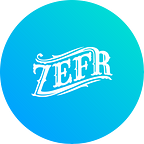By Richard Raddon, co-founder and co-CEO, Zefr
Since announcing Zefr as the first GARM brand-safety measurement provider on TikTok, I’ve been reflecting on what makes Zefr unique and why Ad Tech has historically been such an underperforming vertical.
What makes Zefr unique?
- Zefr doesn’t work on the open web. We just work in the walled gardens.
- We like difficult problems at Zefr and the innovation never stops.
- At Zefr, we don’t place quarterly profits over building long-term value.
Why the Walled gardens? And why doesn’t Zefr build for the open web?
In 2017, when my co-founder and I decided to sell off our rights management software solution (RightsID) and guide the company directly into the Ad Tech space we didn’t know much about the Ad Tech vertical. For background, RightsID was software that integrated directly with YouTube allowing rights holders the ability to monetize their IP whilst giving YouTube additional advertising inventory. The business was a win-win for all parties and allowed Zefr amazing access to the YouTube data API’s. (Note: RightsID sold to Vobile a company trading on the HK Exchange in 2019)
That unique access plus the fact that more and more television advertising dollars were moving to UGC digital platforms motivated us to focus on advertising and content adjacency for these powerful UGC platforms.
As I became more acquainted with the overall Ad Tech ecosystem I realized that hundreds of companies were working on solving problems for advertisers on the open web. The open web represented a small fraction of where audiences were spending their time and where advertisers were shifting their budgets. But the open web ad tech ecosystem was mature and with set industry standards it allowed for clear collaboration between all parties. In short, the environment was much more accommodating to start a new company and gain customer traction. It also led to incredible commoditization which negatively impacted investment that translated into an industry unwilling to invest in real technical innovation.
Zefr likes to solve difficult problems and constantly innovate.
Building in the walled gardens is HARD! At Zefr we focus on the walled garden environments that are especially hard to understand, like video and feed . It’s not only difficult because of the velocity and variety of content uploaded but because each and every platform has a unique set of standards, architecture and user functionality. Since these environments (feed, video) have a scarcity of text we had to build from the ground up a completely new tech stack. This was a Herculean feat which took years and 10’s of millions of dollars to invent. The decision to build the new tech stack was difficult especially in light of the fact that the legacy companies in the space went the route of jury rigging their open web solutions.
Many times during those early years, I secretly questioned whether the effort and investment was worth it. As I’d often hear my new friends in the space quietly say things like, “it doesn’t have to be great, just good enough in Ad Tech” or “the clients aren’t sophisticated enough to understand the difference between good enough and great”.
In the end, we had assembled a team that didn’t have any of those leanings. The team knew that complete transparency and accuracy would be required by our customers as brand safety evolved. The work, the innovation, a new and different tech stack would pay off. A jury rigged open web solution would not be satisfactory for the clients. It’s been satisfying to watch the Product teams at the platforms openly appreciate the Zefr solution. It’s been absolutely thrilling to see how clients have started to demand total transparency and accuracy with brand safety and brand suitability. I’ve often said the best thing to come out in 2020 was the GARM Brand Safety standards driven by WFA and the 4A’s. These Industry definitions of safety and suitability allow for everyone from agency, to vendor, to platform to be on the same page with regards to brand suitability. It creates an environment that requires transparency and demands accountability. A godsend for Zefr.
Zefr builds for long term value vs. worrying about quarterly profits.
Years ago at CES, I listened to Marc Benioff speak to tech CEO’s. He stated emphatically that tech companies needed constant innovation and if they didn’t have a culture of innovation their products would be worthless within 7 years. Constant innovation is a requirement for any enterprise tech company. The third-party brand safety/suitability measurement solutions haven’t evolved on YouTube since they were first introduced 5 years ago. Even though the world of brand safety and suitability has seen a massive evolution with the launching of GARM Safety and Suitability Standards. Every single media agency has evolved their thinking and methodology around brand safety and still the third-party tools have been static. As mature tech companies have gone public, the street has continued to focus on short-term revenue growth above all else. Reinvestment in rebuilding and innovating on legacy solutions is not rewarded by the street which is very unfortunate. At Zefr we will always innovate and build for the future. It’s in our DNA.
In closing, I’m proud of what we have accomplished and what we have built and I’m excited about what we will invent! Advertisers care about adjacency. Advertisers care about brand safety and brand suitability. Understanding content on these global platforms with millions of pieces of content being uploaded every second is a very, very, very difficult problem to solve.
But thankfully we have a fresh view of the ad tech industry, and that has made all the difference.
